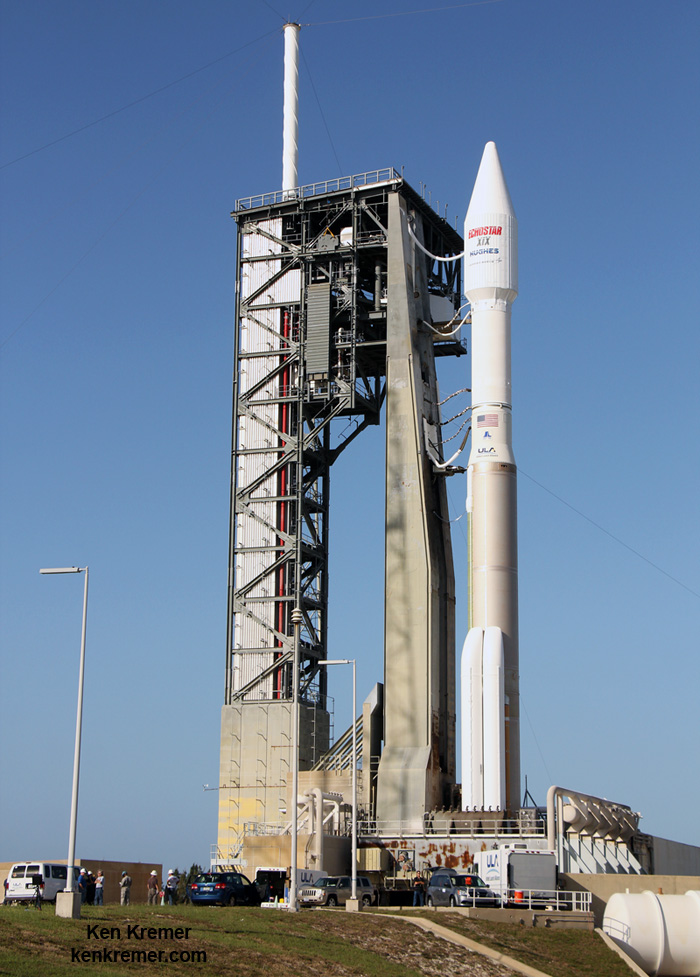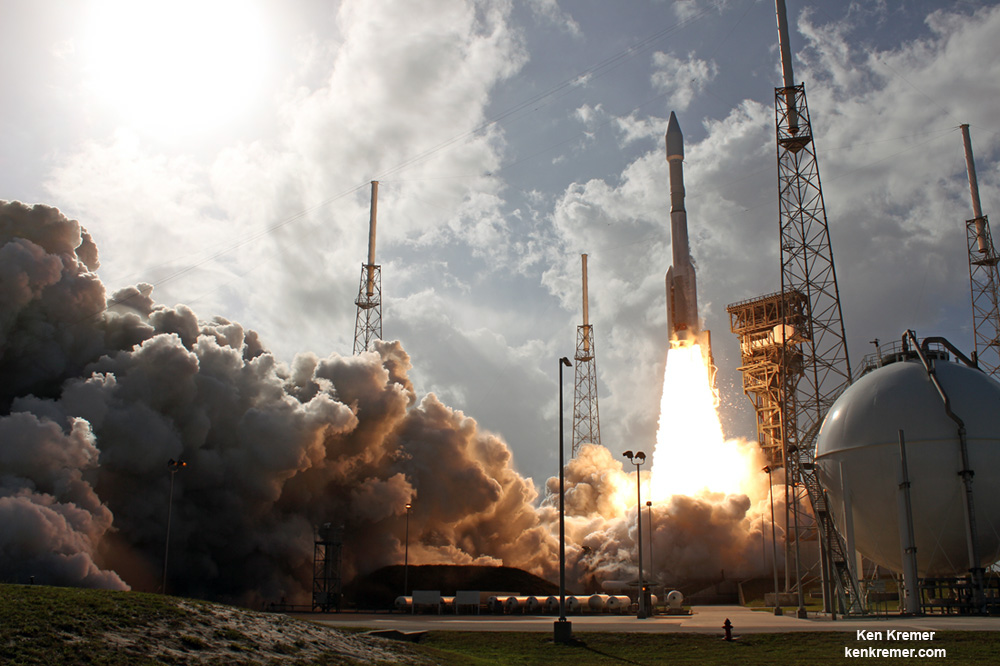
CAPE CANAVERAL AIR FORCE STATION, FL – The mighty Atlas V rocket put on an awesome display of ferocious fury Sunday afternoon delivering a rousing display of rocketeering capability that propelled a new next generation high speed internet satellite to orbit for North America to the delight of spectators gathered around the Florida Space Coast.
The 15,000 pound satellite will also delight American home and business subscribers users of HughesNet® – who should soon see dramatic improvements in speed and capability promised by satellite builder Space Systems Loral (SSL).
With the fiery blastoff of a United Launch Alliance (ULA) Atlas V rocket, EchoStar XIX – the world’s highest capacity broadband satellite – roared to space off Space Launch Complex-41 on Cape Canaveral Air Force Station, Fl., at 2:13 p.m. EST on Sunday, Dec. 18, 2016.
“EchoStar XIX will dramatically increase capacity for HughesNet® high-speed satellite Internet service to homes and businesses in North America,” according to ULA.
“EchoStar XIX will be the world’s highest capacity broadband satellite in orbit.”
Also known as Jupiter 2, it will deliver more speed, more data and more advanced features to consumers and small businesses from coast to coast, says EchoStar.
Liftoff on the sunny Florida afternoon was delayed some 45 minutes to deal with a technical anomaly that cropped up during the final moments of the countdown with launch originally slated for 1:27 p.m. EST.
Incoming bad weather threatened to delay the blastoff but held off until dark clouds and rains showers hit the Cape about half an hour after the eventual launch at 2:13 p.m.
EchoStar 19 is based on the powerful SSL 1300 platform as a multi-spot beam Ka-band satellite.
It is upgraded from the prior series version.
“Building from their experience on the highly successful EchoStar XVII broadband satellite, SSL and Hughes collaboratively engineered the specific design details of this payload for optimum performance.”
EchoStar 19 was delivered to a geosynchronous transfer orbit (GTO). It will be stationed at 97.1 degrees West longitude.
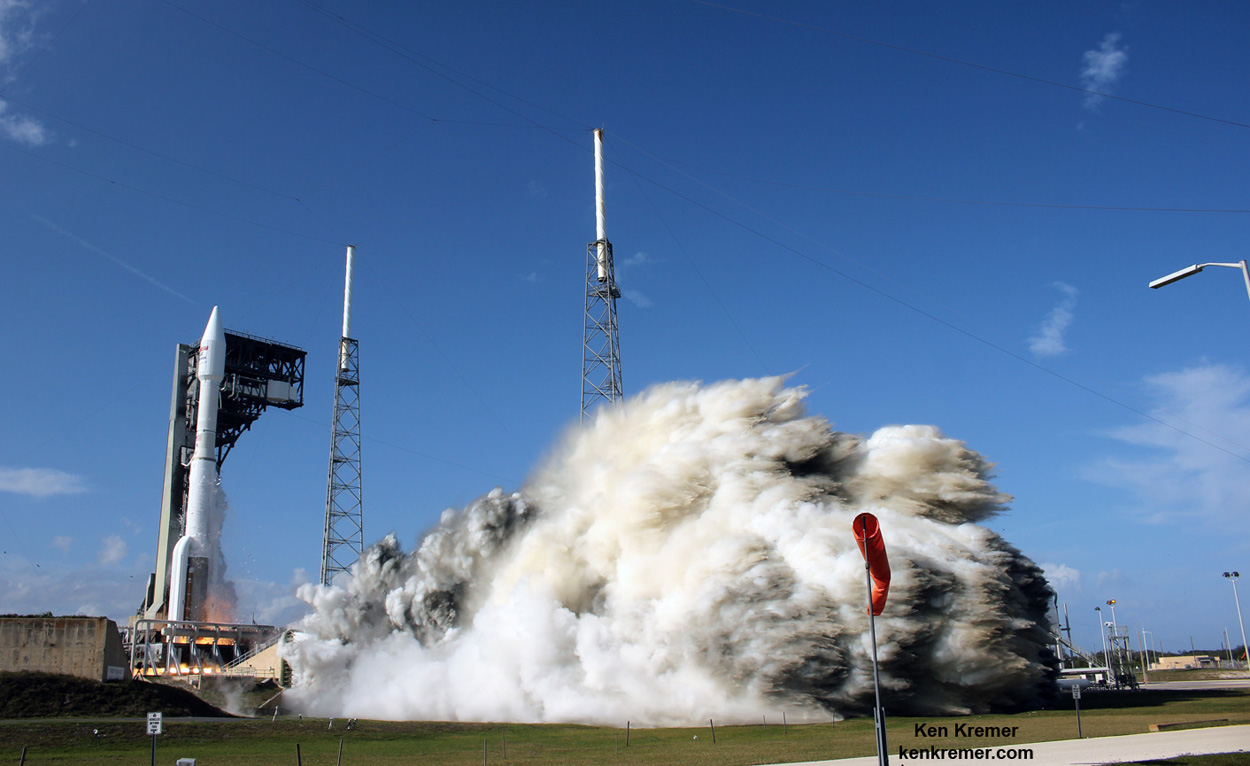
EchoStar 19 was ULA’s final mission of 2016, ending another year of 100% success rates stretching back to the company’s founding back in 2006, as a joint venture of Boeing and Lockheed Martin.
This is ULA’s 12th and last launch in 2016 and the 115th successful launch since December 2006.
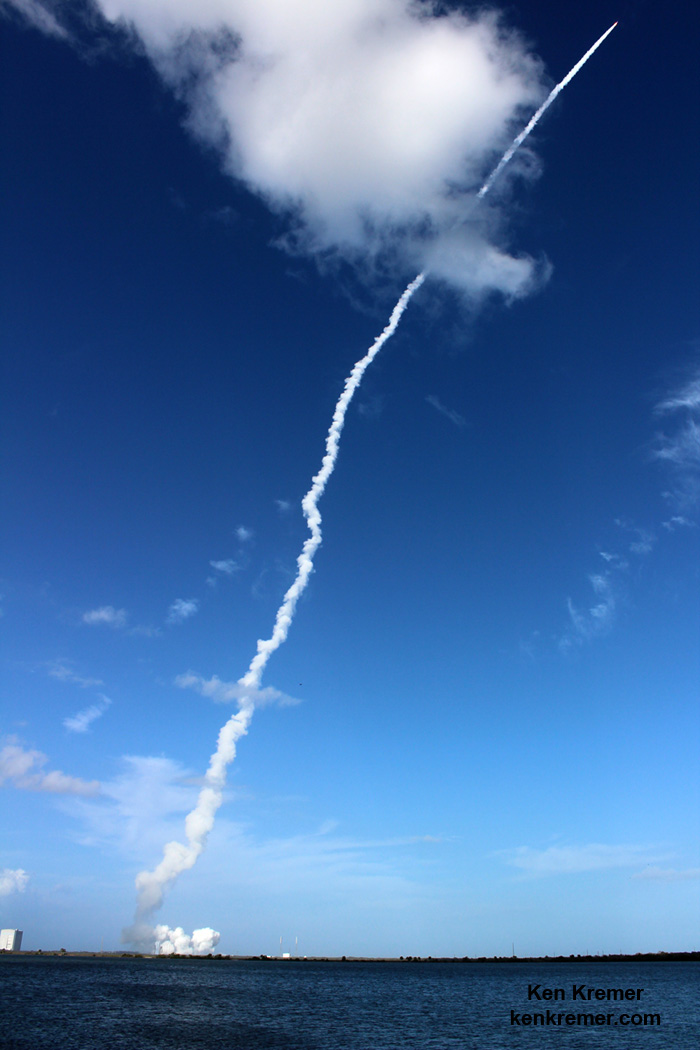
“ULA is honored to have been entrusted with the launch of the EchoStar XIX satellite,” said Gary Wentz, ULA vice president of Human and Commercial Systems, in a statement.
“We truly believe that our success is only made possible by the phenomenal teamwork of our employees, customers and industry partners.”
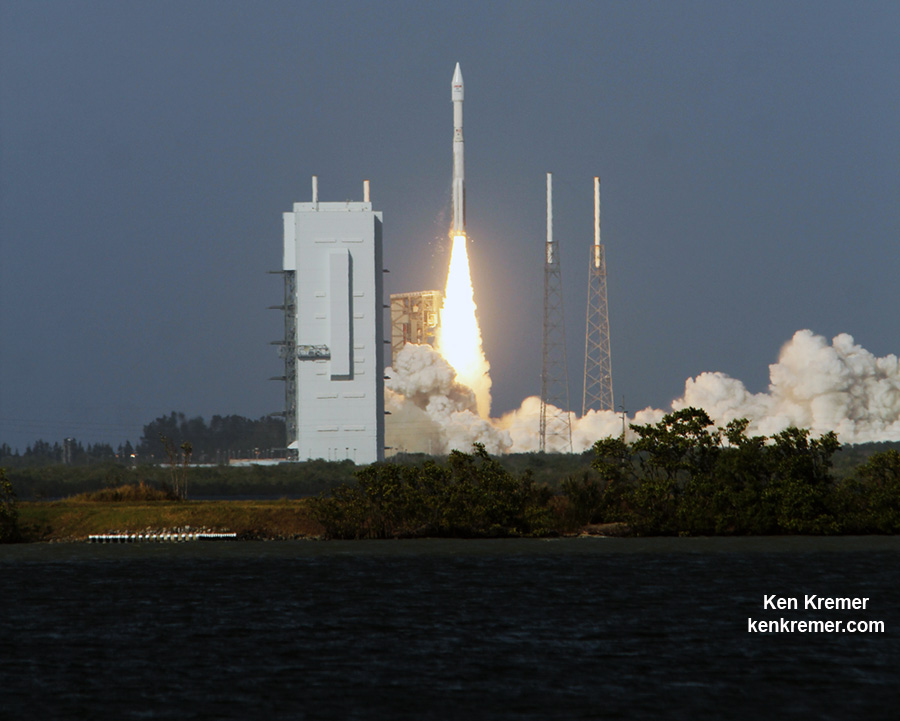
The 194-foot-tall commercial Atlas V booster launched in the 431 rocket configuration with approximately 2 million pounds of first stage thrust. This is the 3rd launch of the 431 configuration – all delivered commercial communications satellites to orbit.
Three solid rocket motors are attached to the Atlas booster to augment the first stage powered by the dual nozzle RD AMROSS RD-180 engine.
The satellite is housed inside a 4-meter diameter extra extended payload fairing (XEPF). The Centaur upper stage was powered by the Aerojet Rocketdyne RL10C engine.
“As we celebrate 10 years, ULA continues to be the nation’s premier launch provider because of our unmatched reliability and mission success,” Wentz elaborated.
“The Atlas V continues to provide the optimum performance to precisely deliver a range of missions. As we move into our second decade, we will maintain our ongoing focus on mission success, one launch at a time even as we transform the space industry, making space more accessible, affordable and commercialized.”
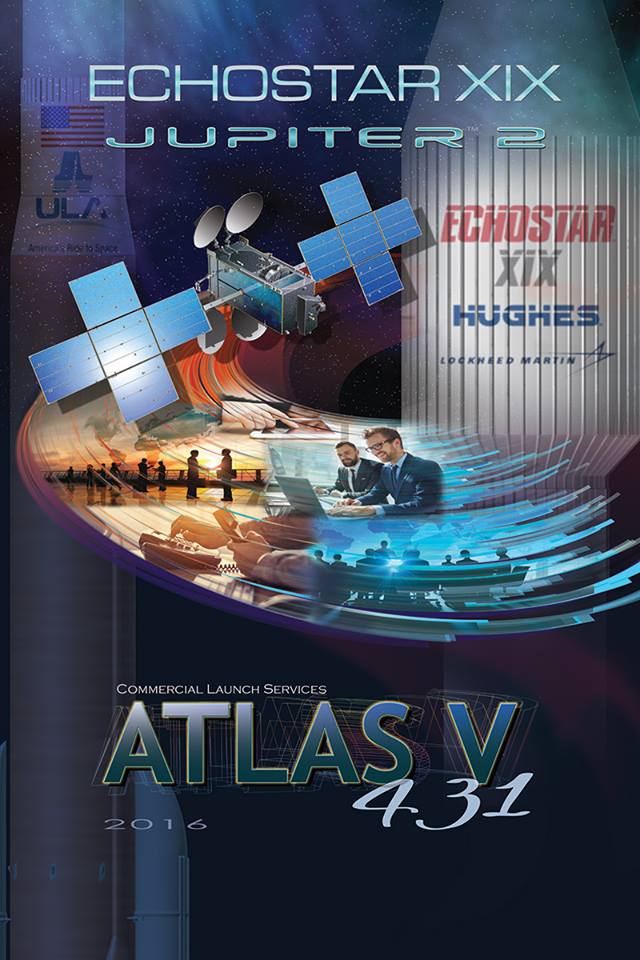
December has been an extremely busy time for launches at the Cape, with three in the past week and a half supported by U.S. Air Force’s 45th Space Wing. These include NASA’s CYGNSS hurricane mission launch by an Orbital ATK Pegasus rocket on Dec. 15; and the WGS-8 military communications satellite launch for the US Air Force by a ULA Delta 4 rocket on Dec. 7.
“Congratulations to ULA and the entire integrated team who ensured the success of our last launch capping off what has been a very busy year,” said Col. Walt Jackim, 45th Space Wing vice commander and mission Launch Decision Authority.
“This mission once again clearly demonstrates the successful collaboration we have with our mission partners as we continue to shape the future of America’s space operations and showcase why the 45th Space Wing is the ‘World’s Premiere Gateway to Space.'”
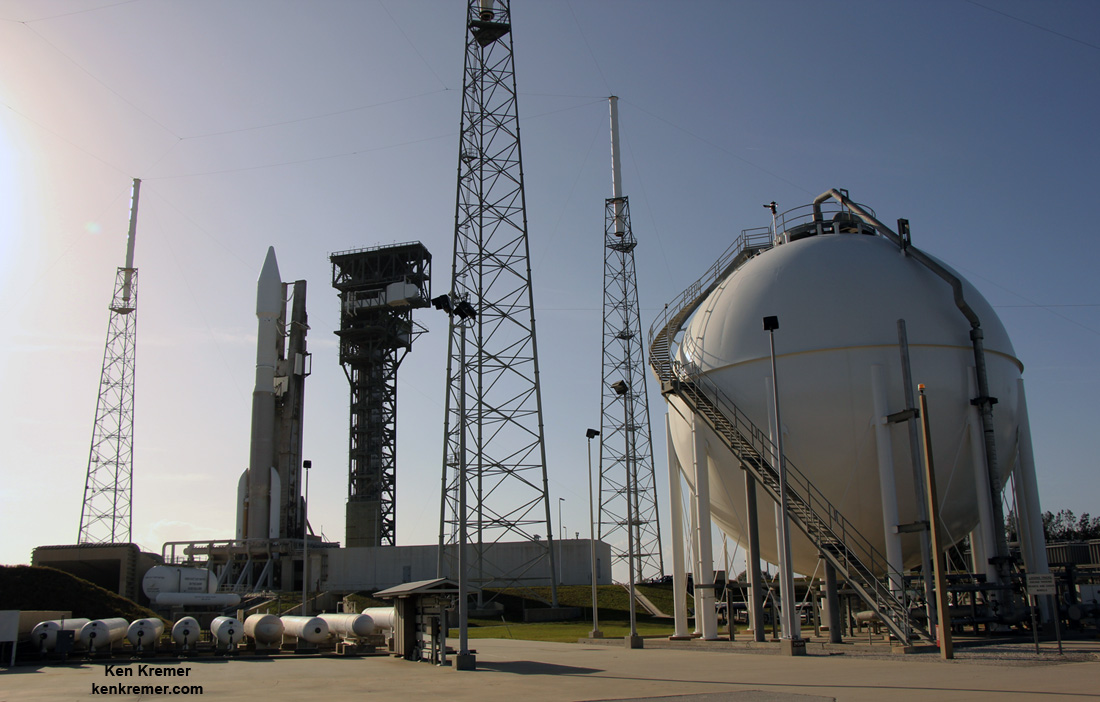
Stay tuned here for Ken’s continuing Earth and Planetary science and human spaceflight news.
